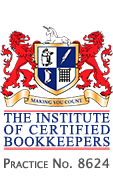ISSUING VAT INVOICES
V1-27 Section 4: Penalties for unauthorised issue of tax invoices
Where a VAT registered person makes supplies of goods or services to another VAT registered person, subject to the standard or reduced rate, they must issue a full VAT invoice as this is the customer evidence to validate input tax claims.
Having said that, it is now possible for input tax claims to be allowed without documentary evidence, providing sufficient evidence of entitlement can be given to HM Revenue & Customs. Such claims are at HM Revenue & Custom's discretion. There is no need to give a VAT invoice to a non-registered person unless they ask for one.
Full VAT invoices must show:
- An identifying number;
- Name, address and VAT registration number of the supplier;
- Name and address of the customer;
- Date of issue and tax point;
- The unit price and a description of the goods or services supplied.
For each description, the invoice must show the quantity of goods or extent of services; the charge made excluding VAT; the rate of VAT; any discount offered and, of course, the total VAT charged (shown in Sterling).
Zero-rated or exempt supplies must be shown separately or on a separate invoice.
'Less detailed' and 'modified' VAT invoices
Apart from full VAT invoices, there are also 'less detailed' and 'modified' VAT invoices, which are only applicable to retail sales. Less detailed invoices can be issued for VAT-inclusive supplies of £250 or less. The invoices need only show: name, address and VAT registration number of the supplier, date, tax point, a description of the goods or services, and the VAT-inclusive total for each rate of VAT involved.
The VAT amount is then calculated by applying the VAT fraction:
(1/6 when the standard rate is 20%).
(1/21 when the rate is 5%).
Note that exempt supplies cannot be shown on a less detailed VAT invoice.
The supplier can adapt credit card vouchers to constitute less detailed invoices by adding his registration number, a description of the goods or services, and the appropriate VAT rate, but if he gives a receipt as well, only one of them can be the VAT invoice.
Modified VAT invoices can be issued by retailers with the customer's agreement and even for sales over £250. They should show the VAT-inclusive value of each positive rated supply, then at the bottom: the total VAT-inclusive value of the positive rated supplies; the VAT due on them in Sterling; the VAT-exclusive value of the supplies, and the value of any zero-rated or exempt supplies.
If in any doubt, full VAT invoices should be issued, and please do contact your accountant if you are unsure.
Penalties for incorrect issue of VAT invoices
As ever, there can be heavy financial penalties for errors including the potential cost of unauthorised issue of VAT invoices. It is important to distinguish between errors made on VAT invoices by normal, VAT-registered businesses and the 'unauthorised' issue of VAT invoices.
Unauthorised issues are those of invoices purporting to be VAT invoices by persons not entitled to issue them, for example, by businesses not registered for VAT. Where a VAT-registered person makes a mistake on a VAT invoice, it is unlikely HM Revenue & Customs will take action. However, the unauthorised issue of VAT invoices is taken much more seriously.
A person or business is 'unauthorised' unless they are:
- A person registered for VAT under VAT Act 1994,
- A corporate body which is a member of a group VAT registration,
- A person representing a taxable person who has, for example, died or become bankrupt,
- A person authorised to issue an invoice on behalf of a taxable person when selling goods to satisfy a debt
- A person acting on behalf of the Crown.
Also, a person who does not comply with the invoicing rules for the flat rate farmers' scheme is an unauthorised person.
Up to and including 31 March 2009, the penalty was 15% of the VAT shown on the unauthorised invoice (or the amount taken to represent VAT).
For unauthorised invoices issued from 1 April 2009, the basic penalty is 30% (for careless errors) rising to 70% and 100% for more serious offences. However, reductions are available for unprompted disclosures, assistance given to HM Revenue & Customs and allowing full access to records. Furthermore, HM Revenue & Customs can suspend some penalties for careless errors but that will usually be on the condition that improvements are made e.g. to record-keeping.
Having said that mistakes by VAT-registered persons are less serious, it is still crucial that recipients of VAT invoices check to ensure all the required features are included so as to avoid any unnecessary disallowance of input tax.
